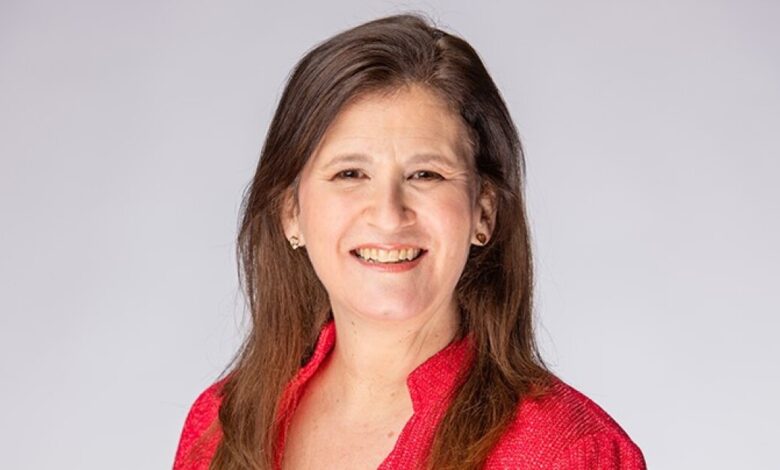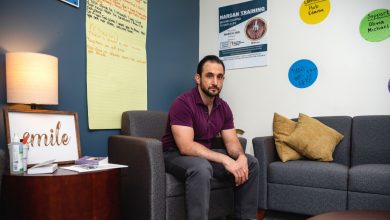This College Is Scrapping an Onerous Financial-Aid Form for Low-Income Students. Here’s Why.

[ad_1]
For 15 years, Nicole Hurd led the College Advising Corps, a national college-access organization that works with low-income and first-generation students. During that time she regularly surveyed the group’s advisers and asked them informally about their concerns. Their No. 1 complaint every time? The CSS Profile.
That’s the name of the online financial-aid form students must complete to apply for institutional aid at many prominent colleges. The application, owned by the College Board, is used by more than 300 colleges and scholarship organizations to allot more than $9 billion a year to students with need. Providing a full picture of an applicant’s financial situation and family background, the form is more detailed than the Free Application for Federal Student Aid, or FAFSA, which families use to apply for government grants and loans.
But many college-access advocates have described the CSS Profile as a barrier for students who tend to need the most help with the admissions process — and who have great financial need. As The Chronicle reported in an in-depth article this year, completing the tedious form can be a difficult, even demoralizing, experience.
“We make low-income students prove over and over and over again that they’re poor, and that’s not OK,” says Hurd, founder and former chief executive of the advising organization. “It takes a long time to fill out the Profile, and it’s harder if you’re not a native English speaker, if your tax status is complicated, or if you’re not in communication with both of your parents. This form is a problem.”
This is really about knocking out barriers. In higher education, we put up a lot of barriers that are unnecessary.
After becoming Lafayette College’s president this summer, Hurd shared her concerns about the application with other administrators. On Thursday the institution, which long required all aid applicants to complete the form, announced that it would grant low-income students an exemption — a small change that, as the prominent college-access expert sees it, speaks to larger issues.
In an interview with The Chronicle this week, Hurd described the new policy and why she thinks it’s important for college leaders to scrutinize their financial-aid requirements.
As I reported this year, concerns about the CSS Profile have prompted some colleges that use the form to reconsider the requirement. The University of Chicago created a short aid application that students can use instead. Recently, Clark University announced that it would waive the Profile for families whose adjusted gross income is less than $100,000. Lafayette will be doing something different. Please explain.
We will no longer require the form for applicants attending high schools where 75 percent or more of students qualify for free and reduced-price lunch. The onus is now on us. When students tell us which high school they attend, we will know when they don’t have to fill out the Profile because we’ve got a list of those high schools. The changing of the paradigm here is that instead of asking a student to verify their financial status, we will be using aggregate data — high-school data that’s been publicly acknowledged as important — to waive the requirement.
Where did this idea come from?
It came from my experience with the College Advising Corps. For the last 15 years we’ve been partnering with hundreds of high schools where 75 percent or more of students qualify for free and reduced-price lunch. The high school is an interesting unit of measure that maybe those of us in the higher-ed space don’t think about enough. So this came from thinking about the bigger ways in which we could identify low-income students without creating a burden for them, and about ways to make the financial-aid process more streamlined and effective.
How will a student know if they qualify? And what about low-income students who attend high schools with many affluent students?
All school counselors know the free-and-reduced-price lunch rate at their high school. So they can say, “If you’re applying to Lafayette, you don’t need to complete the form.” We’re also going to be watching applications and notifying the students that don’t have to do it.
We will waive the CSS Profile for all students who qualify for free and reduced lunch regardless of the high school they attend. We will just need the student or counselor to help us flag the student as part of the application process.
What about students who don’t qualify for free and reduced-price lunches, but who still might have great financial need and find the form difficult?
We will continue to learn as we implement. We will have the ability to waive the CSS Profile for anyone who asks, and will do so as we review requests.
Many financial-aid officials have told me that the CSS Profile provides essential information that enables them to make more precise and equitable decisions than they could make using the FAFSA alone. But you’re saying that for low-income students the additional layer of information is unnecessary.
That’s right. Colleges using the CSS Profile are trying to make good decisions about limited financial-aid dollars. My concern is that if everyone is already filling out the FAFSA, you already have the level of information that you need for low-income students. We don’t have to get such granular information that makes it painful, if not impossible, for them to apply for financial aid. Now that I’m sitting in the higher-education space, I’m seeing that we don’t really need it for this population of students.
So the question is: What’s the least invasive instrument we can use? To me, using the FAFSA and a high school’s free-and-reduced-lunch rate is a lot easier on the student than digging into people’s tax forms and retirement accounts, or tracking down a noncustodial parent, as required by the Profile.
We in the financial-aid space spend so much time pushing on the individual. So let’s try and push this to the collective and say, “You don’t have to do this because your school’s free-and-reduced lunch rate is going to get you through the door.” This is really about knocking out barriers. In higher education, we put up a lot of barriers that are unnecessary.
The biggest barrier, for many students, is paying for college, as you know well after many years working with low-income applicants. Now you’re now leading an institution where the total cost of attendance is more than $70,000 annually, and where before Covid, in fall 2019, 11.6 percent of freshmen were eligible for federal Pell Grants. This fall, it’s about 7 percent.
What do you think of those numbers? As we get past the disruption of the pandemic, how can the college remove barriers to enroll more low-income and first-generation students?
One prong is waiving the CSS Profile. The second, as we’re announcing this week, is eliminating loans for families making $150,000 or less. I know there’s a ton of talent, and Pell-eligible talent, in that population. A lot of times small liberal-arts colleges don’t make the pathways to such institutions as clear as they should be. Our goal is to continue to increase diversity on this campus. These initiatives are aimed at making sure that we can recruit the best and brightest students regardless of economic circumstances.
In fall 2019, about 6 percent of domestic students in Lafayette’s freshman class were Black, 8 percent were Hispanic, and 5 percent were Asian-American. When you look at those single-digit numbers, what goes through your head?
There’s no doubt that, at Lafayette and a lot of other institutions like us, the number of first-generation, low-income, and underrepresented minority students needs to be higher. My other concern is this: Access is not inclusion. What bothers me when we just look at raw numbers is that you can actually admit a lot of students and then they don’t have an impactful experience, or they have a negative experience. It’s not as simple as, “Hey, I can admit all these students, and now I have double-digit number, and I can pat myself on the back and say we’re now a diverse institution.”
OK, but did you actually think about the support system, the infrastructure, the things you need to have students feel seen, valued, and heard? Yes, we need to increase all those numbers. We also need to make sure that we are not treating people like numbers. All of us still have a lot of work to do around making sure that we have the right support systems, making sure our students are seen, valued, and heard. It’s not just about a numerical goal.
Let’s turn back to the CSS Profile and how you see it relating to larger issues. Most college presidents don’t have years of experience working in the college-access realm like you do. What would you want them to know about what it’s like to fill out this particular form? And why should they care?
It’s not just the form. It’s the emotional drainage of filling it out. And it’s not just the students, it’s the families who have to be involved in these financial-aid disclosures. It makes them feel like they don’t belong in higher ed. Often low-income families are nervous, maybe they’re intimidated. These barriers that make it worse.
The form really does set the table for a student’s higher-ed experience. Even if they successfully fill out the FAFSA and the Profile, even if they get admitted, they bring a feeling with them to campus. And they might not feel like they’re welcome.
It was clear to me doing access work that these early interactions matter. When we start a relationship by telling a student to fill out all these questions because we think they might be gaming the system, and they have an expected family contribution of $0, or they attend a school with a high population of students on free and reduced-price lunch, what are we saying to them?
This interview has been edited for length and clarity.
[ad_2]
Source link






